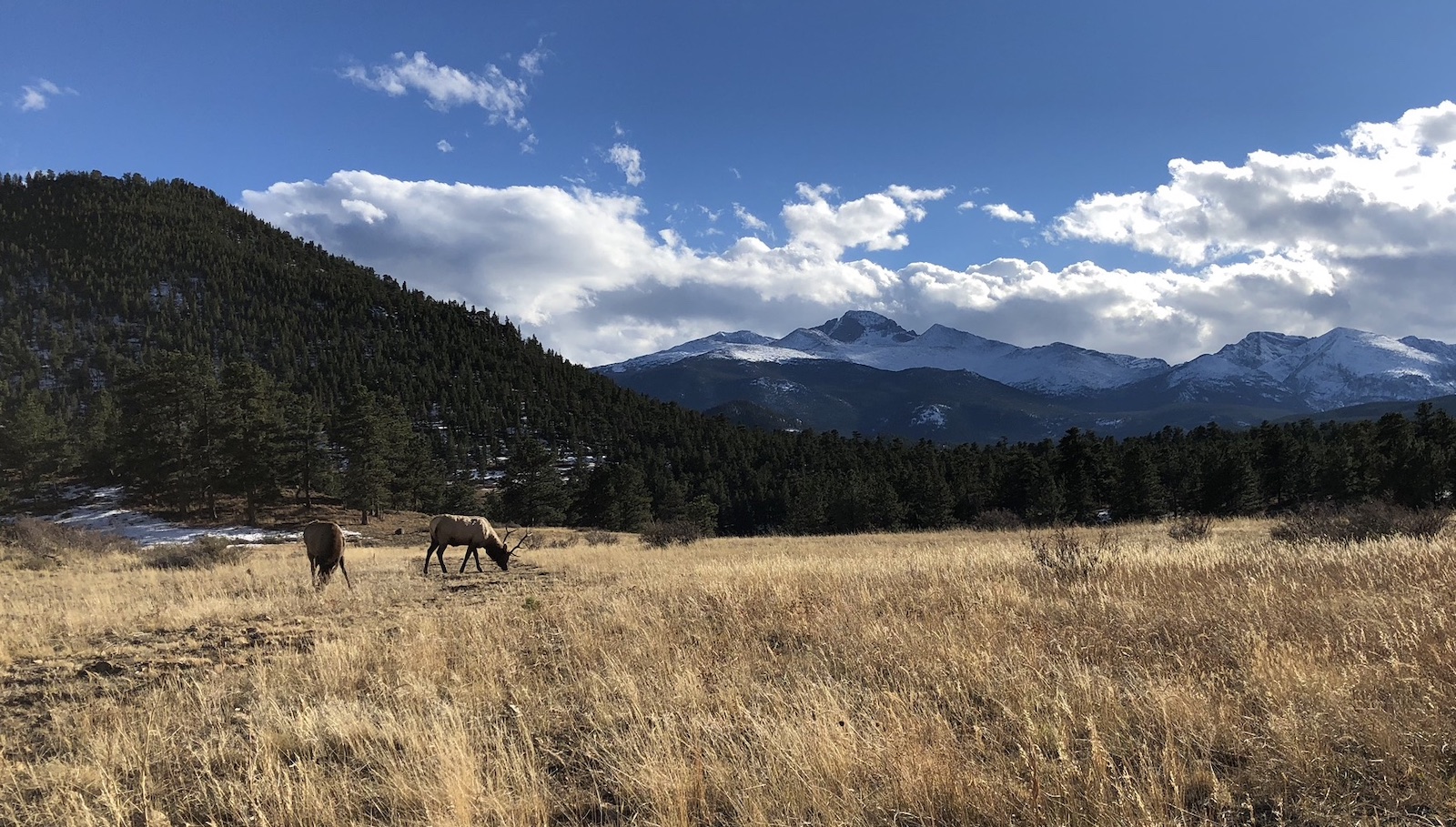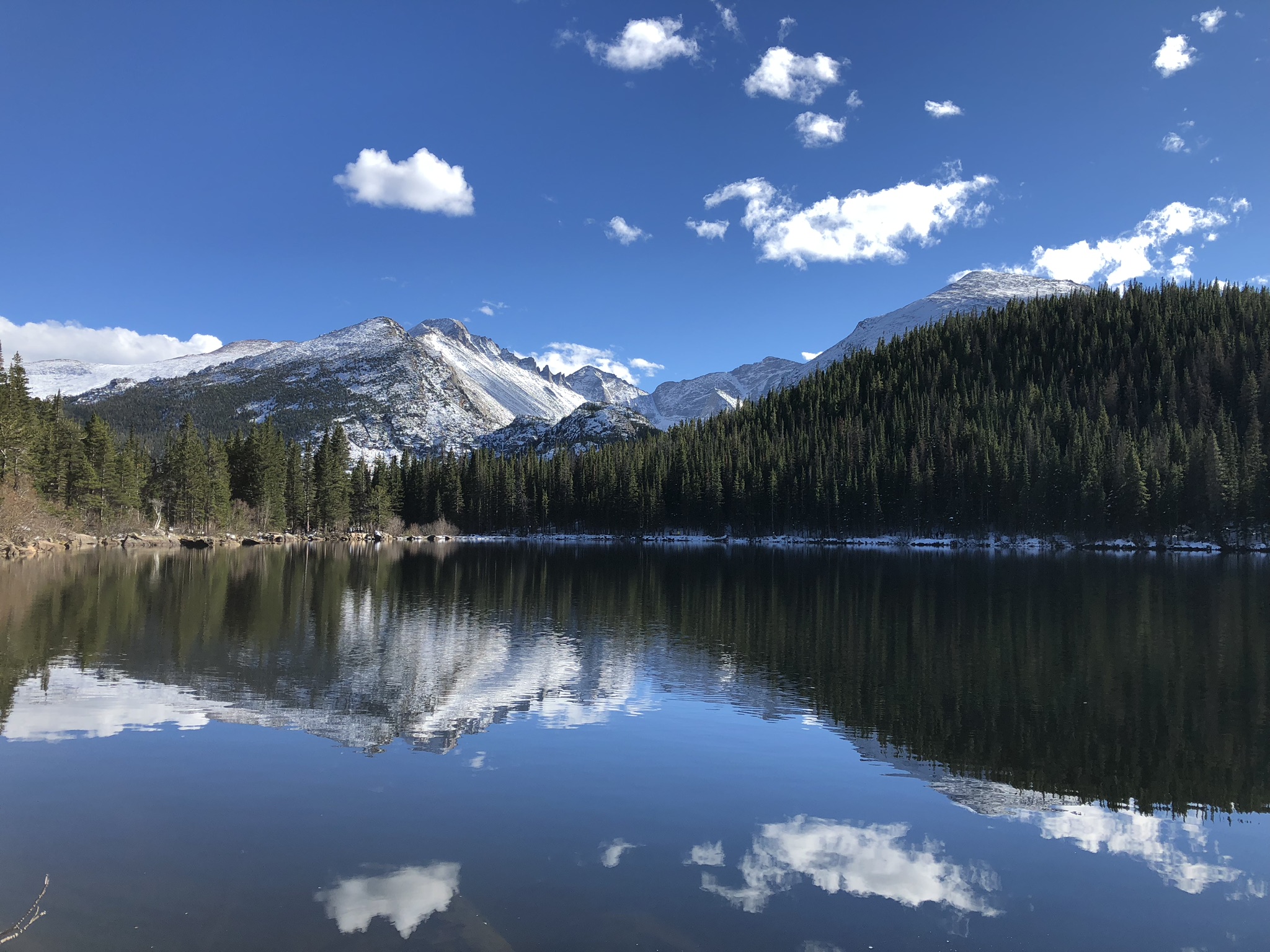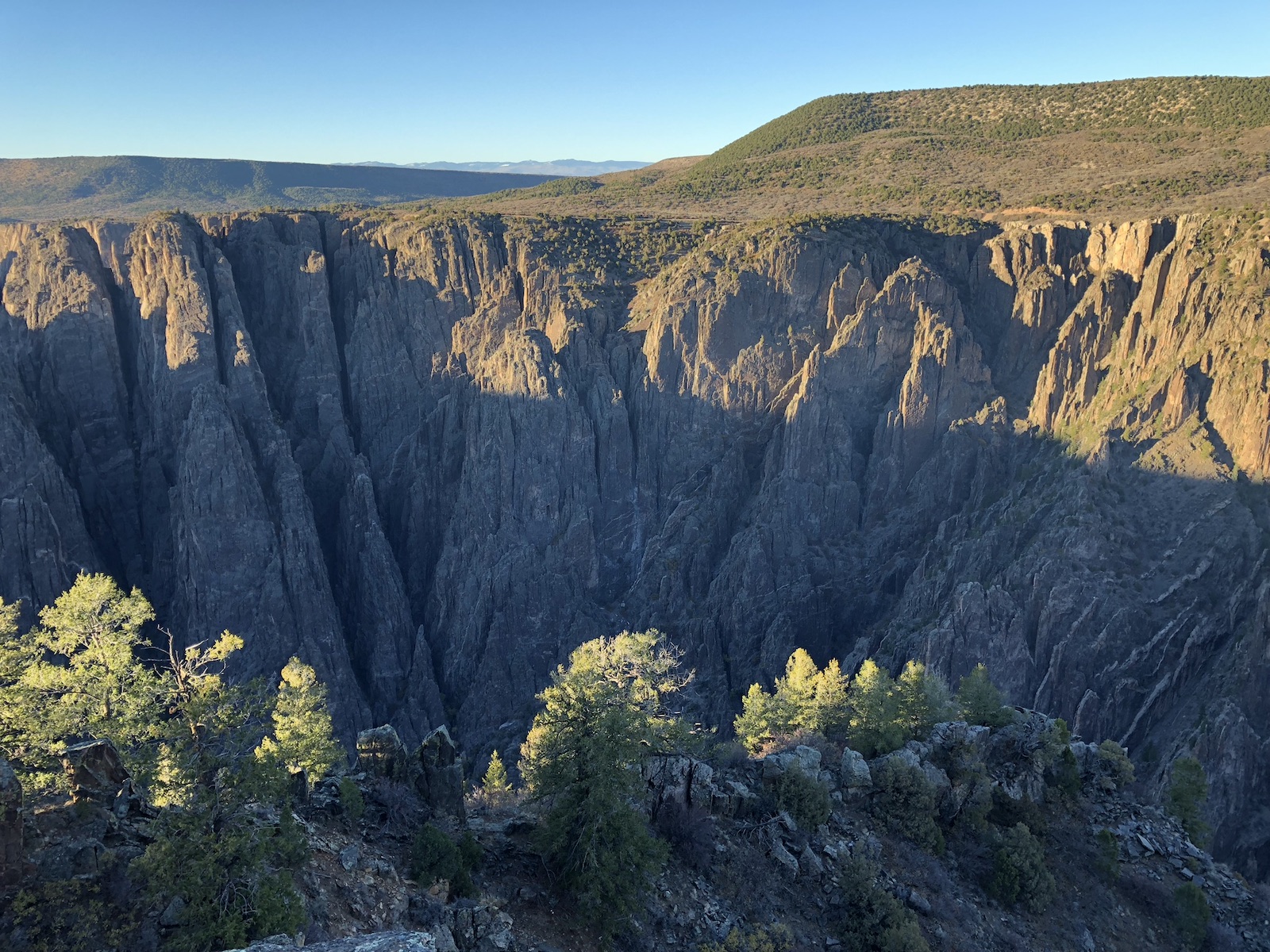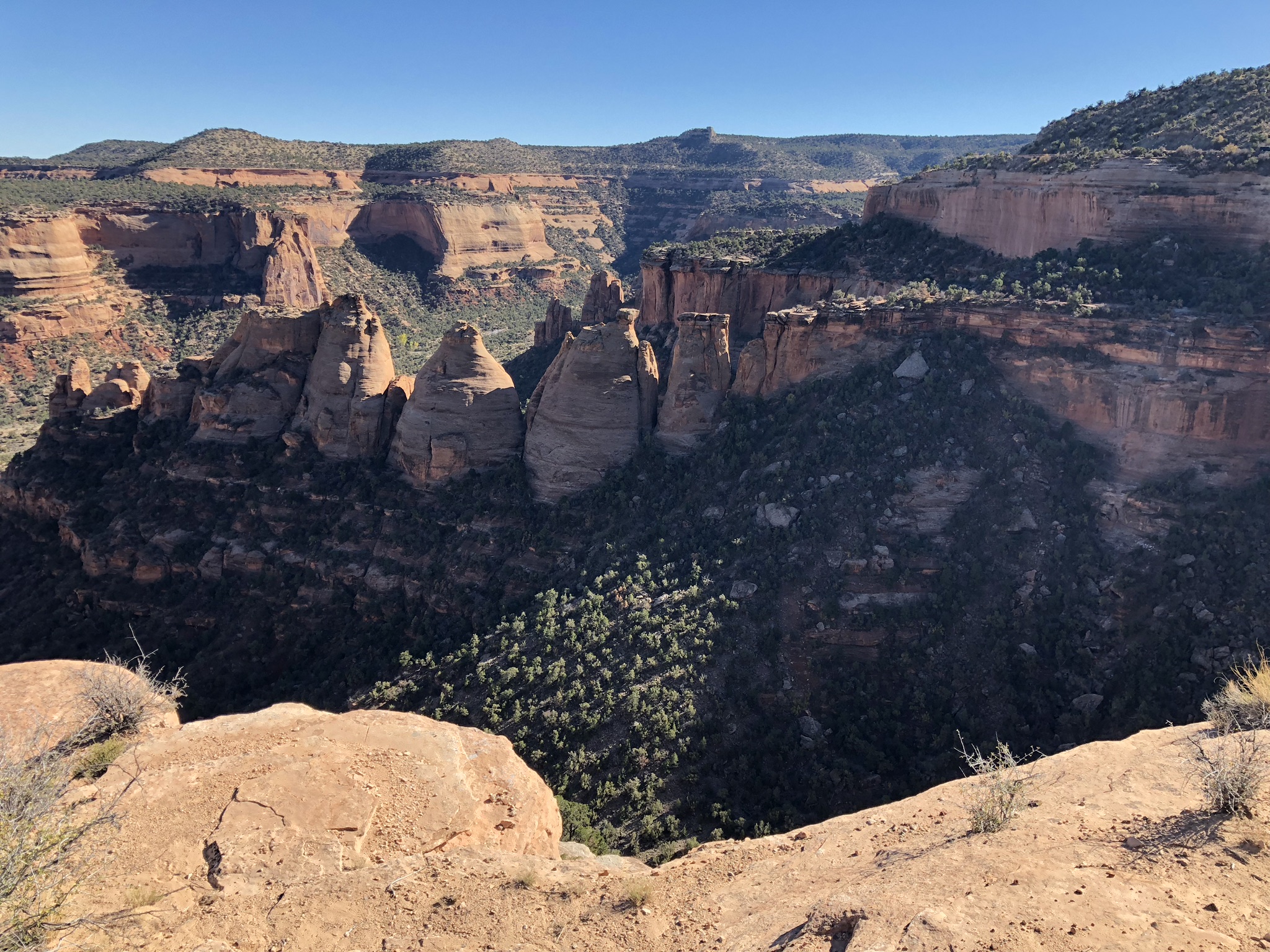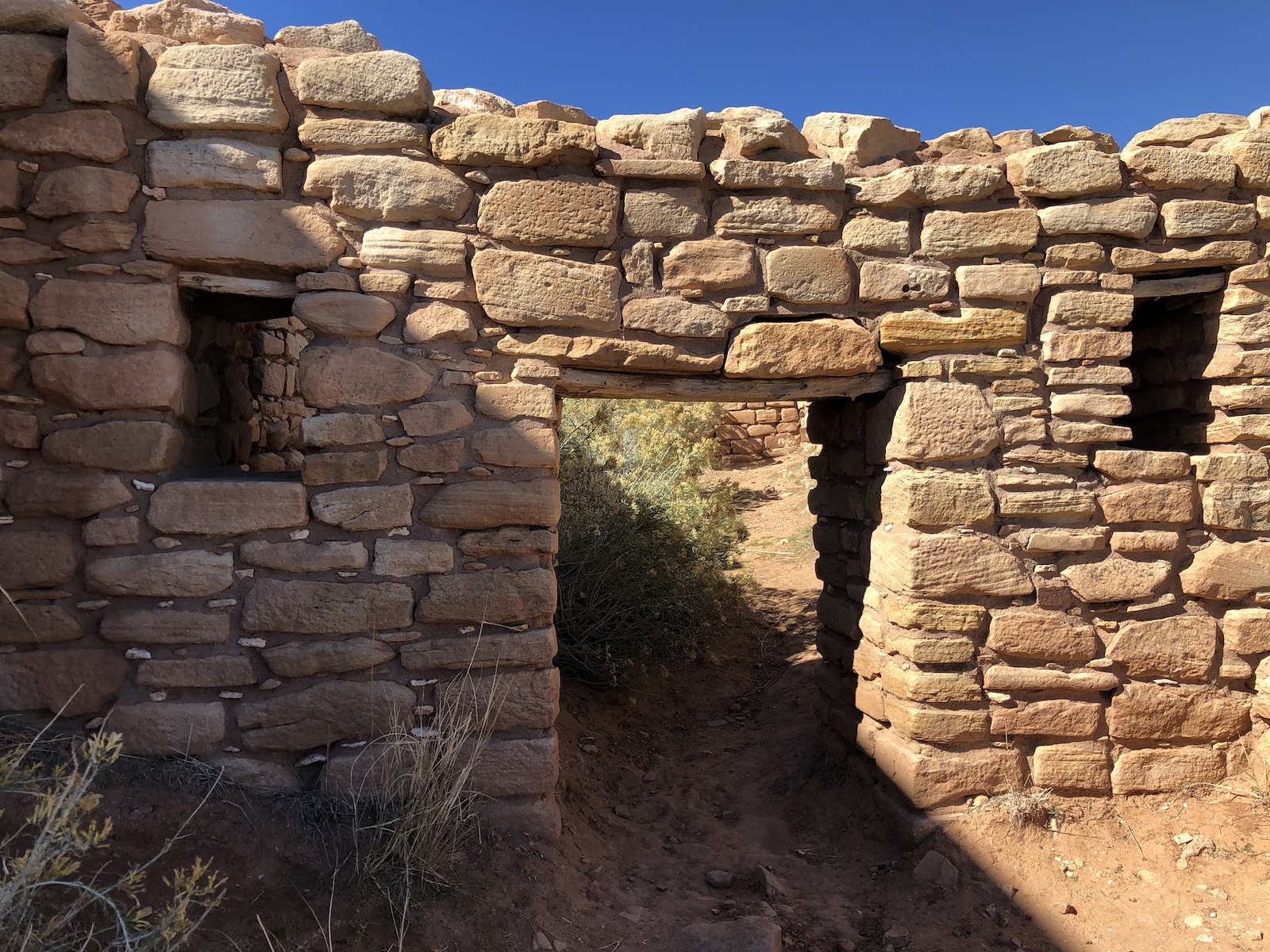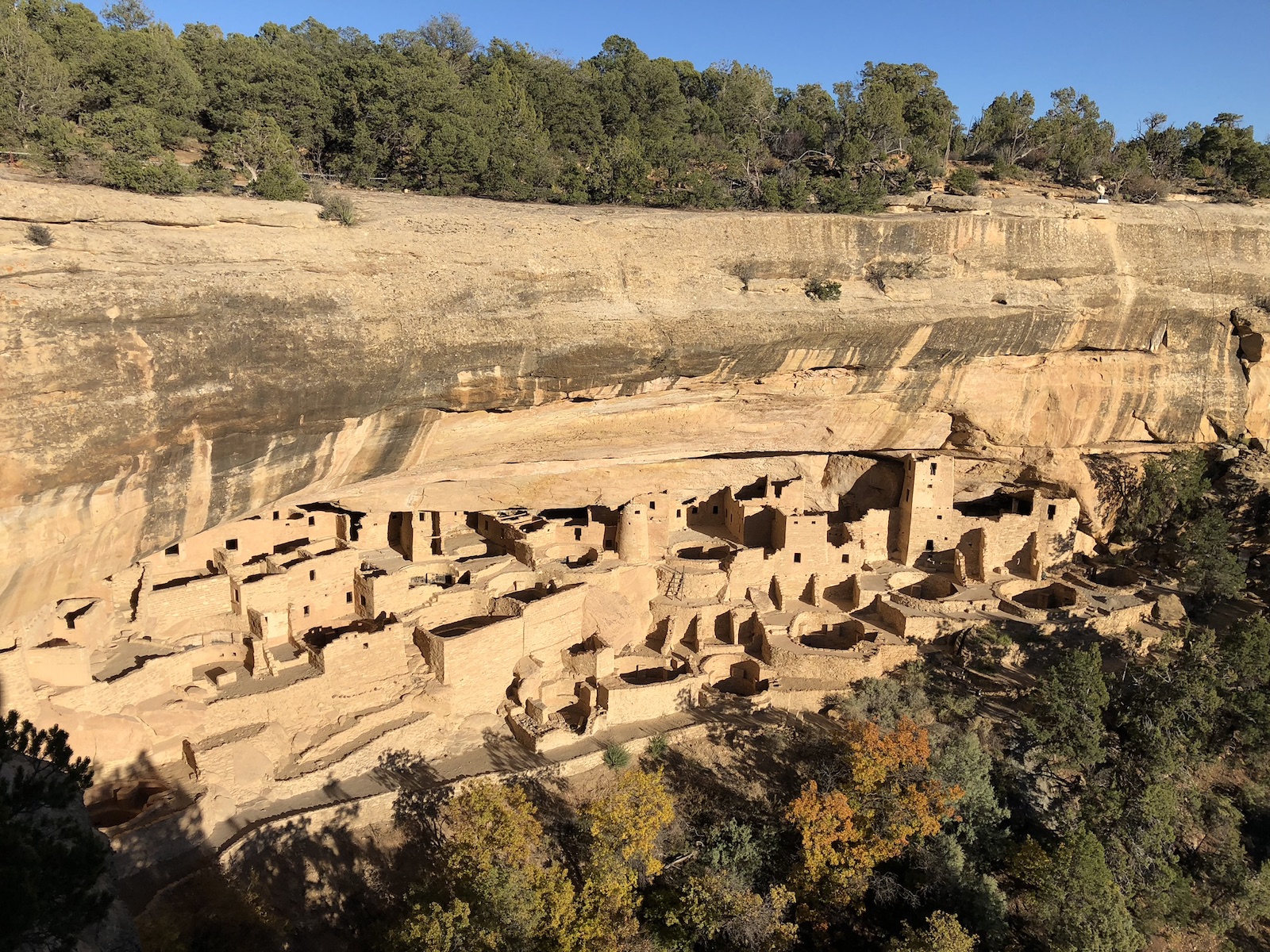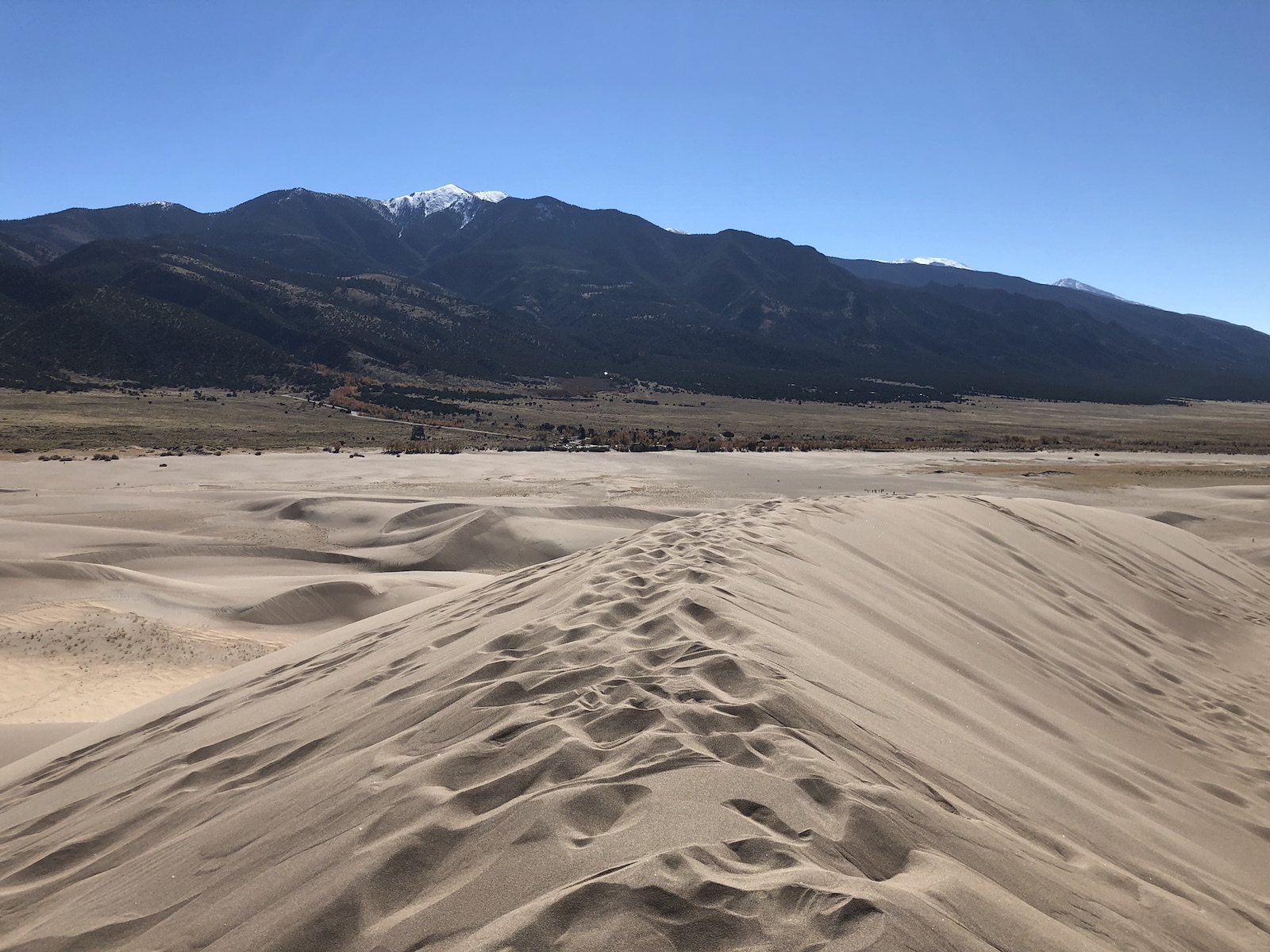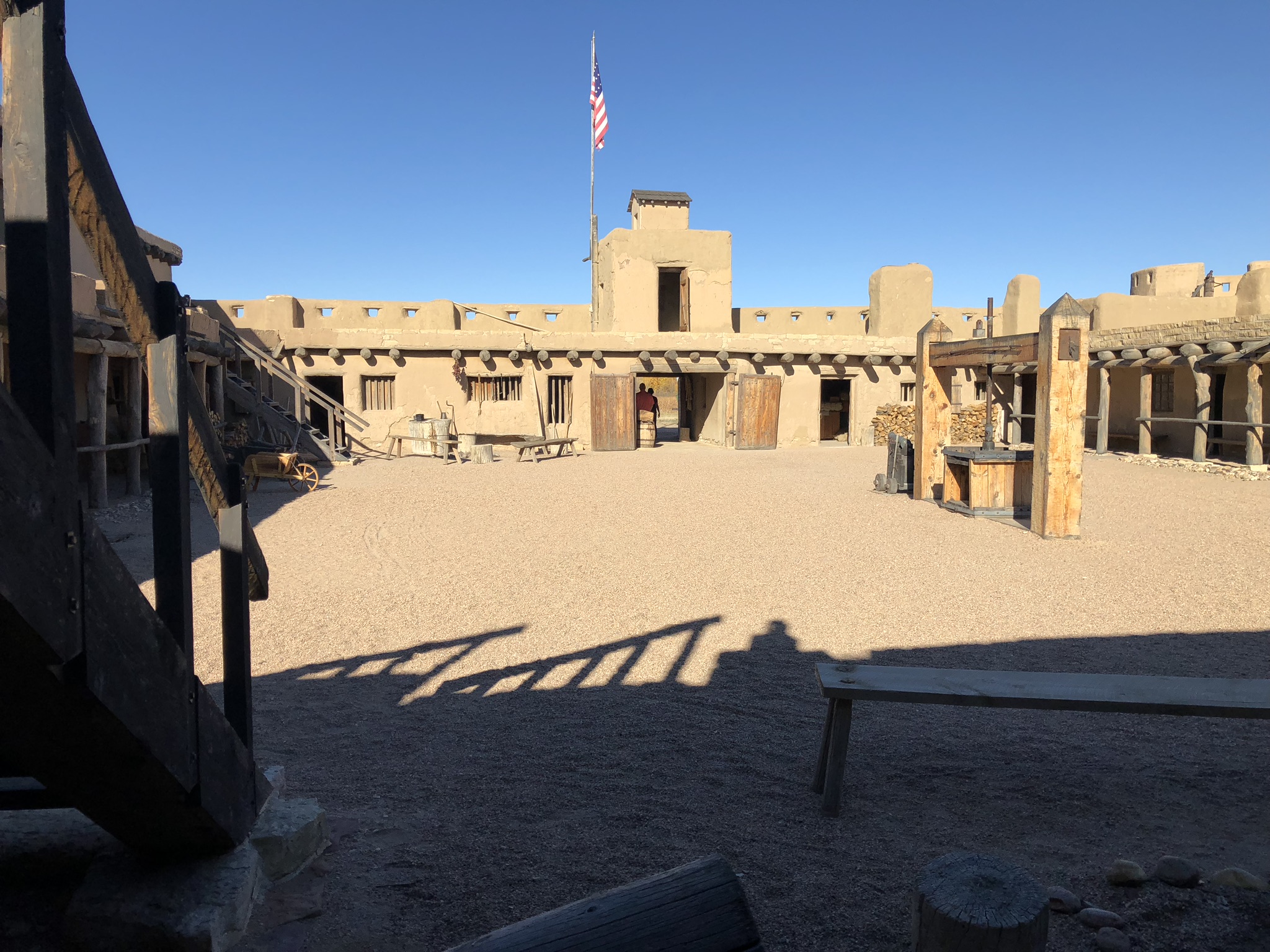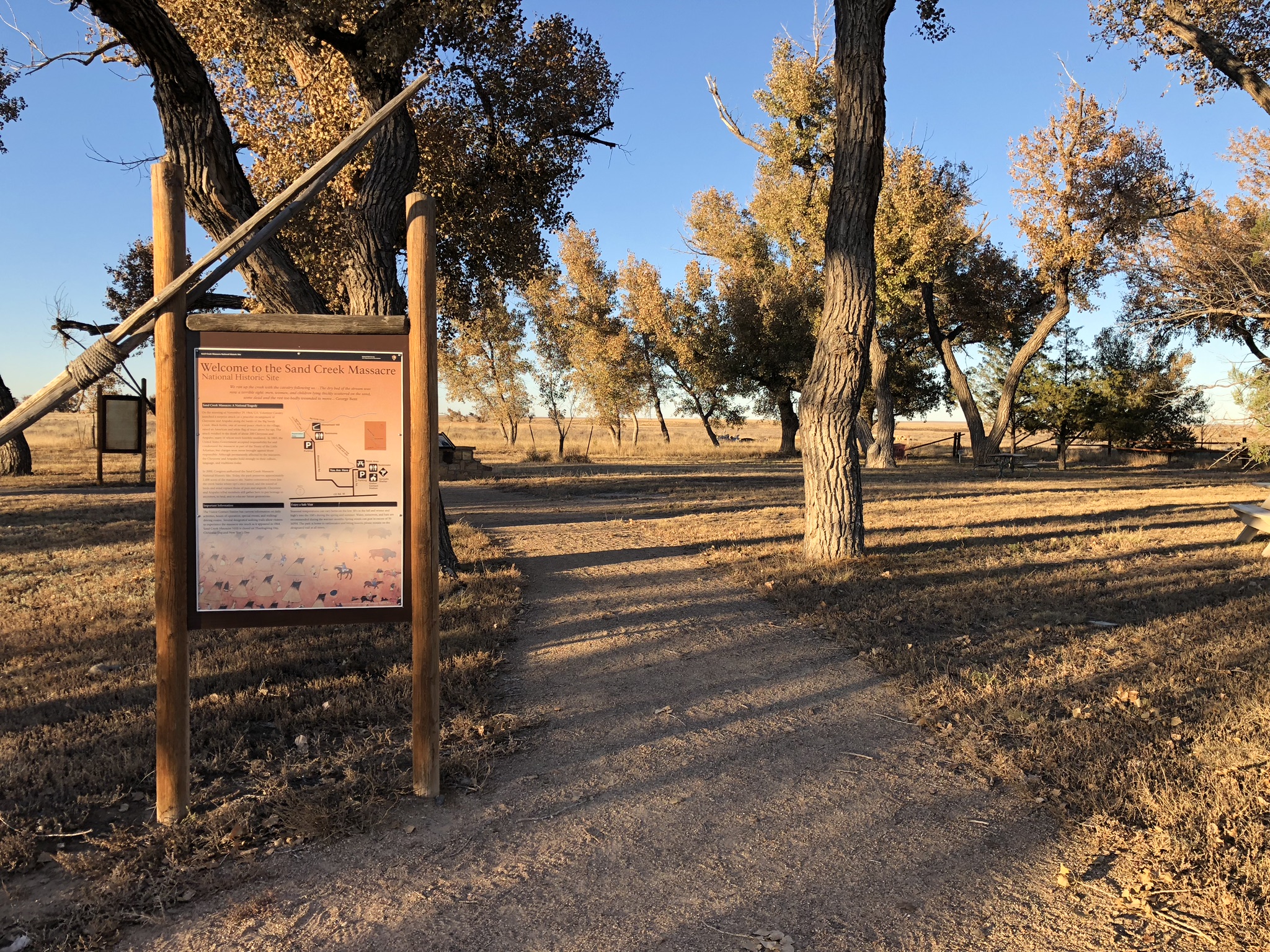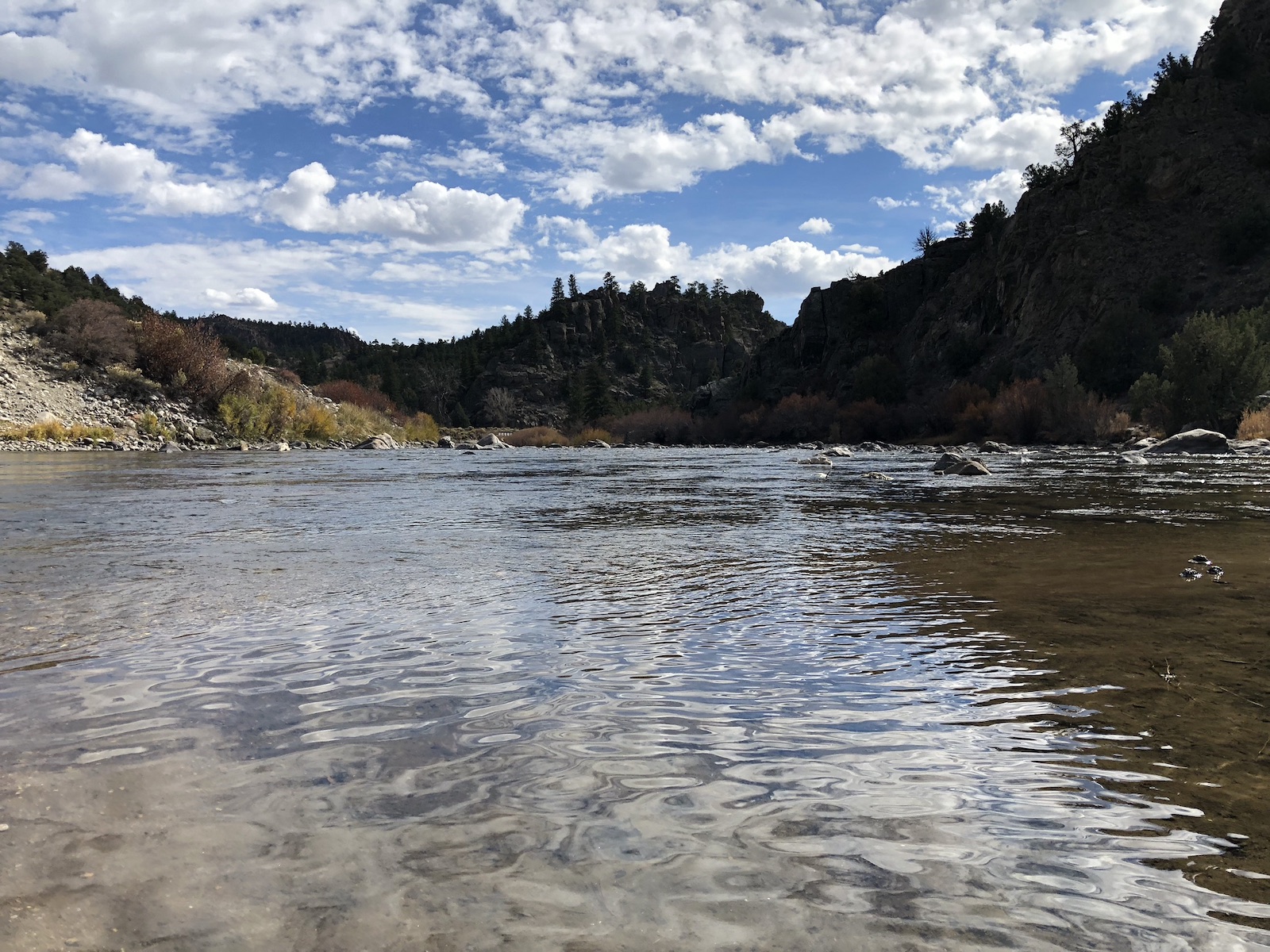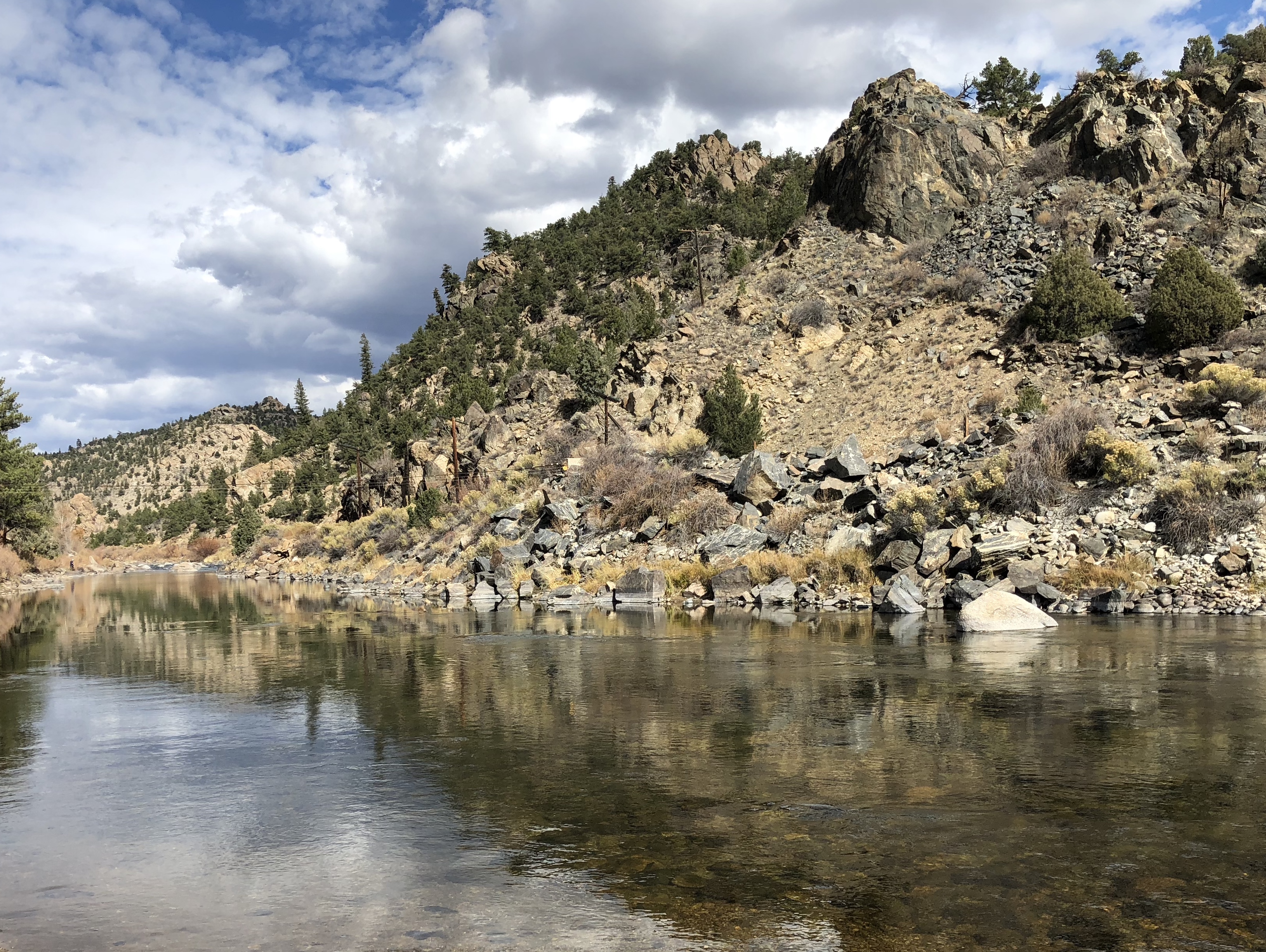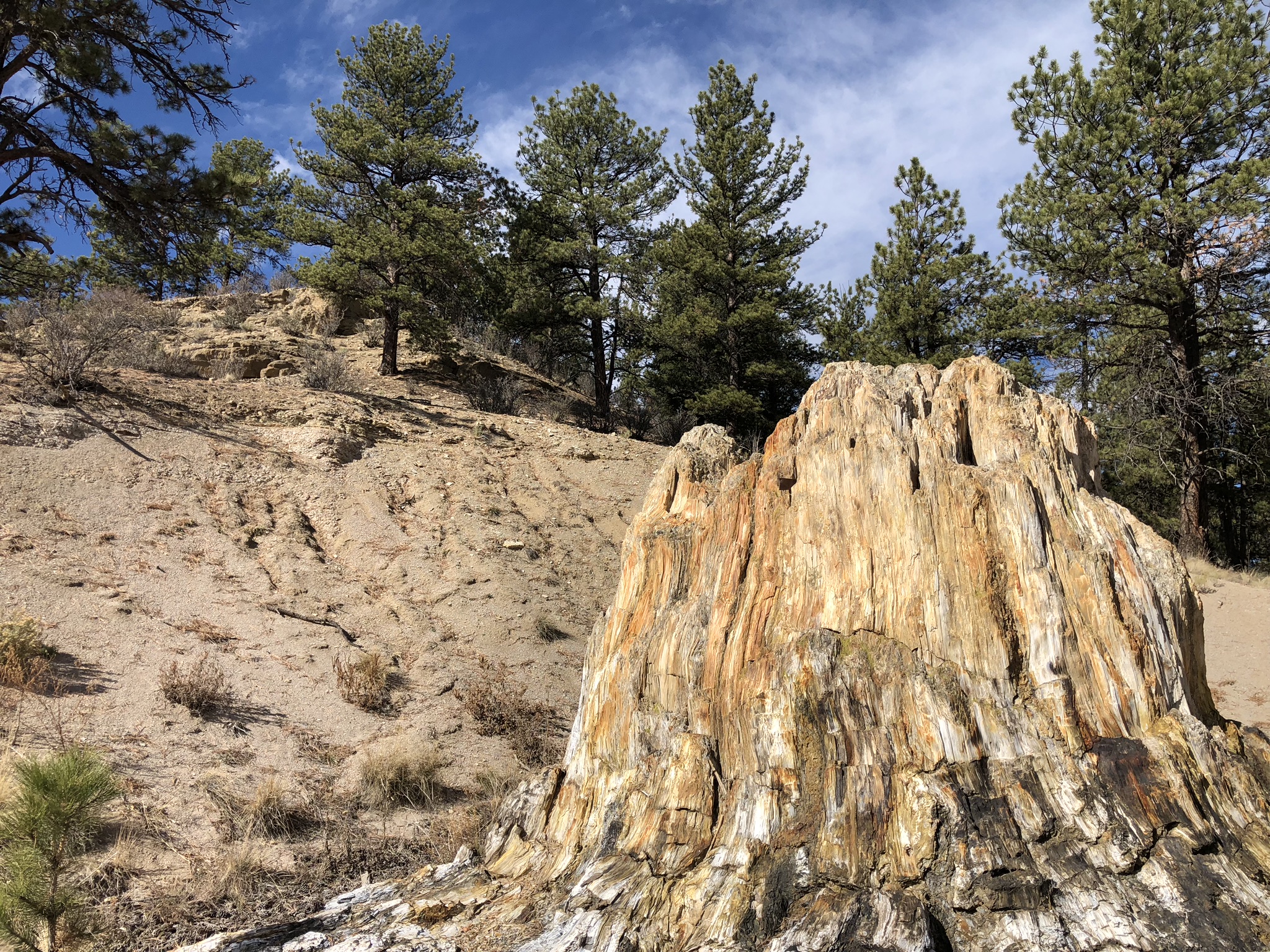The Local newsletter is your free, daily guide to life in Colorado. For locals, by locals.
Call me crazy, but last fall I had the idea to visit all of Colorado’s national parks, monuments, and historic sites in a four-day span, by myself. While completing the nearly 2,000-mile journey, I found new inspiration and unforgettable beauty, along with challenging roadblocks—such as a midnight conversation with the police and some unexpected run-ins with animals.
Here is a journal of how the memorable tour of Colorado shook out, with some tips for adventurers who may want to take on their own tour of the state’s national treasures.

Thursday
3:30 p.m. Just before arriving at Dream Lake in Rocky Mountain National Park, I see on the trail ahead of me a bride-to-be who has walked the entire icy trail with her fiancé (while holding up her wedding dress!) for photos at the lake. I use her fortitude as inspiration for the thousands of miles ahead of me.
4:15 p.m. Leaving RMNP, hordes of tourists are flocking to take pictures of elk. Thanks to the park’s proximity to Denver and its plethora of short, manageable trails with stunning views, RMNP has gained the reputation of being overcrowded. True to those stories, it would end up being the busiest stop on my entire tour—but that doesn’t mean it wasn’t also one of the most beautiful.
Friday
11:15 a.m. After spending the night in Vail, I arrive the next morning at Dinosaur National Monument near the Utah border. Even on this beautiful Friday morning, it’s a ghost town. Reveling in my solitude, I drive up the winding roads and peek out over the expansive terrain where dinosaurs roamed millions of years ago. I try to imagine creatures like the Allosaurus lording over this land in the late Jurassic. Now, it’s simply one of the grandest landscapes in all of Colorado.
2:30 p.m. I head two hours south to Colorado National Monument just west of Grand Junction, where erosion has carved sandstone rock into gorgeous formations that call to mind the views of nearby Arches National Park. The hour-long journey along Rim Rock Drive fosters a nice bite-sized (and kid-friendly) national park experience that has some great stops along the way to get out, stretch your legs, and snap some pictures.
5:30 p.m. Passing through the farming towns of Olathe and Delta, I end the day at Black Canyon of the Gunnison National Park outside Montrose. Driving along the south rim at sunset, the canyon seems even more beautiful than it was when I visited in high school. The impossibly jagged rocks, sheer cliffs and soaring birds along the canyon walls make this one of my favorite stops on my entire journey.
A bit of history: I was amazed to learn that in 1901, two explorers led an expedition on a rubber air mattress to see if they could find a way to divert some of the Gunnison River’s water for farming. Nine years later, their initial goal came to fruition with the Gunnison Diversion Tunnel, which provides water to the areas around Montrose. Since then, upstream dams have weakened the flow of the river (and its ability to further carve the canyon), but it’s still a sight for sore eyes at the end of a long day on the road.
Saturday
10:45 a.m. A night camping in under 40-degree weather hasn’t dampened my spirits, as I continue past Ridgway and the San Juan National Forest to Canyons of the Ancients National Monument. The Escalante Pueblo, an ancestral dwelling at a hilltop near the visitor center, provides a 360-degree view of southeast Colorado and the historic Ute Mountain.
Just 30 minutes away along a quaint country road is Lowry Pueblo, an even more expansive ruin that shows how intricate (and community-oriented) some of the mid-millennial dwellings truly were.
1 p.m. The hidden gem of the Colorado’s national sites is Hovenweep National Monument, which many Coloradans miss because it is truly in the middle of nowhere. The visitor center and trail actually sit on the Utah side of the Colorado–Utah border, but the monument covers land in both states. I found myself asking how anyone would have found this place, which includes six prehistoric villages built between A.D. 1200 and 1300, after it was deserted. Props to a Mormon expedition in 1854 for finding these well-preserved ruins next to a picturesque desert canyon, and to President Warren G. Harding for dedicating the monument on March 2, 1923.
1:45 p.m. Rattlesnakes! My enjoyment of the ruins at Hovenweep is halted by not one, not two, but three rattlesnakes on the two-mile trail to the monument. Like a horror movie, they escalated in size as I went along, and the last was coiled and rattling just below a step on the trail as I approached. Two other hikers and I put our heads together and found a way around it, but I was horrified thinking of all the snakes I had probably passed by without even noticing. There was a giant empty cage toward the end of the trail that I assume was where the National Park Service keeps its biggest rattlesnake, unleashing it as necessary on kids who wander off the path or try to deface the ruins (kidding, of course).
3:15 p.m. I spend a good 20 minutes driving around confusedly on dirt roads before finally finding Yucca House National Monument, which is located on private property (past a “No Trespassing” sign) southwest of Cortez. With only a wall visible and the rest of the ruins submerged underground, this monument wasn’t really worth the stop. I saw only one other visitor here, Bad Hat Guy, who, with a misplaced amount of pleasure, tells me I’m too late to hit my final stop of the day, Mesa Verde National Park. Confident in my planning, yet with some concern rising, I scamper off to the car and get on the road.
4:15 p.m. Take that, Bad Hat Guy. I make it to Mesa Verde National Park not only with time to spare before sunset, but with time to complete the entire driving loop and marvel at the iconic Cliff Palace—which, in my opinion, truly is the finest specimen of all of Colorado’s pueblo monuments.
Sunday
12 a.m. I awake in the middle of the night to the sound of loud yells of distress coming from one of the rooms in my Airbnb near Pagosa Springs. Disoriented, confused, and shaking, I investigate as much as I can before deciding the best course of action is to leave the house and call 911. Long story short, the elderly Airbnb host had a terrible nightmare but had no idea she was making noise (and later, after I had found alternative lodging, didn’t wake up to police knocking on her door). When I informed her of my experience, she was embarrassed and kindly honored my request for a refund.
11:30 a.m. After a quick stop to take some photos of Chimney Rock National Monument from a distance (the road up to the monument’s Puebloan dwellings is closed to cars nearly eight months of the year), I take a hiking expedition up the sand at Great Sand Dunes National Park and Preserve. I watch groups of people hilariously take their sleds and snowboards out on the soft, fine sand for a joyride. Unlike my first visit to the Dunes in eighth grade, I’m not getting sandblasted as I bask in the view of the Sangre de Cristo mountains skirting the park. Along with the Black Canyon of the Gunnison, this is another favorite park—mostly because you can combine fun physical activity with jaw-dropping views. As I’m writing this, I still have a pit of sand in my shoes.
3:45 p.m. Following a long drive to southeastern Colorado through La Junta, I’m delighted when I’m asked to help fold the American flag at Bent’s Old Fort National Historic Site, a reconstructed trading post and cultural crossroads along the Santa Fe Trail. For about 16 years in the mid-1800s, there was hardly a hotter spot in the West as white trappers and military men traded with Native Americans and set the stage for an invasion of Mexico’s northern provinces.
5:15 p.m. The day ends in a somber visit to the Sand Creek Massacre National Historic Site near Lamar, where U.S. soldiers slaughtered as many as 200 Cheyenne and Arapaho Native Americans in 1864. Out at this incredibly remote monument alone, I walked the same path as the U.S. soldiers likely did while they contemplated and rationalized the atrocity they were about to commit. I was inspired by the tales of the courageous soldiers who refused to fire, even at threat of their own death, but I struggled to read about the gruesome violence that will forever mark November 29, 1864 in history.
Monday
7 a.m. I rise to the sun peeking over the banks of John Martin Reservoir near Lamar, and quickly get on the road toward Florissant Fossil Beds National Monument. The monument is near Colorado Springs on the site of a petrified forest where, 34 million years ago, rhinoceros-like creatures grazed among 200-foot Redwood trees as wide as trucks. Opportunists and settlers took away quite a few of the petrified forest remains, but the fossils of giant spiders and now-extinct plants were a reminder that Colorado hasn’t always looked like it does today.
1:15 p.m. Arriving at Hecla Junction near Salida in Browns Canyon National Monument, which gained monument status in 2015 under President Barack Obama, I crouch down and run my hands through the cool water of the Arkansas River, thinking back on all I’ve seen over the past few days. Watching the sparkling river cut through the rocky canyon, I’m reminded how lucky I am to have spent so much of my life here, in the Centennial State.
Check out a map of Colorado’s dozen national parks and monuments here.
Note: The only National Park Service site in Colorado not mentioned here is Curecanti National Recreation Area in Gunnison.




